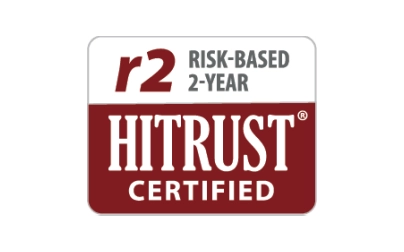Most states and cities are relaxing pandemic-related restrictions across the U.S., but COVID-19 is still widely circulating. In some areas, cases, hospitalizations and deaths are on the rise. On the telehealth consumer frontlines, Carenet Health nurse triage teams are seeing upward trends again in both overall telehealth case volume and COVID-19-related case numbers.
Despite those worrisome statistics, Americans are eager to return to some semblance of pre-pandemic life. But what’s the safest way to do that?
We asked our telehealth registered nurses (RNs)—who serve thousands of individuals and triage thousands of cases across the nation each day—what their advice is for health plans, based on the members they’re connecting with right now.
> Don’t stop communicating what we know works to prevent infection.
Our nurses are urging health plans to keep up the safety reminders to their members—encouraging coverings over the nose and mouth when around other people and the practice of social distancing of at least 6 feet. They’re also encouraging plans to make sure members know that many people infected with COVID-19 are actively shedding the virus and showing no symptoms.
“Stories are helpful in explaining this. Like … your aunt may look perfectly healthy at a family barbecue, but she may be COVID-19 positive and exposing everyone without knowing it,” one nurse said.
“We need to tell members to consider the same guidelines we’ve been talking about for several months now—wash your hands frequently with soap and water for 20 seconds or use hand sanitizer that contains at least 60% alcohol, keep your distance, avoid crowds, disinfect frequently touched objects and surfaces daily. That’s how you minimize your chances of exposure, and it bears repeating again and again.”
> Do all you can to make sure members don’t let their guard down.
Carenet RNs worry that many Americans have pandemic fatigue. “Of course, it’s human nature to want to get out there again. But we’re still very much in a pandemic. I am constantly counselling people to be cautious, especially if you are at a high risk for COVID-19 complications.”
A Carenet colleague agreed. “My advice is always to follow whatever you feel comfortable with within the guidelines being presented, depending on your level of health. For example, if you have diabetes, asthma, a compromised immune system … if you’re a caregiver for the elderly, you do not want to take unnecessary chances of exposure right now.”
One nurse had similar comments: “I want people to understand that just because states are opening, the coronavirus is still prevalent, and it is essential that you avoid close contact with others. Yes, enjoy life, but be smart.”
Multichannel member communications, personalized to address a specific risk, can be helpful in getting these messages across, especially among select demographic groups.
Some patients—especially young adults—seem a little unconvinced that, for example, riding in a car together makes it impossible to keep necessary distances, several nurses said. “I think there is a bit of a false sense of security out there, and many people are not thinking about some of the simple things that need to be considered still,” one RN said. “For instance, after a retail or restaurant transaction, you need to wash your hands before you do anything else. Let’s keep that top of mind.”
> Direct your members to reliable sources of information.
Social media and Google searches aren’t the best ways to keep up-to-date on just how widespread the virus is in your area or what experts recommend you do to protect yourself right now. Yet nurses continually hear from patients who have turned to those sources first.
“I’ve had to remind individuals to visit the CDC website, or check with their local county’s health department,” one RN said. “I’m shocked at how many patients have never been to the CDC site.”
The good news is that health plans can play a role in getting the factual, evidence-based information out to members on a regular basis to balance what’s being shared that may be anecdotal or untrue.
> Promote the use of telehealth to minimize exposure and get information quickly—but don’t forget about in-person care.
Telehealth has seen a surge in utilization during the crisis, and it continues to be a vital part of healthcare’s new normal. But sometimes, in-person care is absolutely needed.
One of the issues that emerged during the first months of the pandemic was that telehealth patients who truly needed emergency or urgent care often refused to go, due to fears of COVID-19 exposure. Our teams say that hesitance appears to be enduring across most demographics.
“It remains difficult to encourage people to go to the emergency department (ED) or urgent care center. Yet three sentences before in our triage conversation, they told me they were having chest pains,” a Carenet RN said. A colleague said she also has to remind patients that sitting in an ED doesn’t necessarily mean heightened exposure. “You can wear a facial covering while you’re there. And hospitals have very strict cleaning procedures. It’s probably safer to go to the ED right now than any number of other public places, like a grocery store.”
> Keep talking about mental health—and how to access care and support.
U.S. citizens have been reporting rising levels of emotional stress during the pandemic. A recent Kaiser Family Foundation poll found that 56% of Americans reported that worry or stress related to COVID-19 has led to at least one negative mental health effect, such as trouble with eating or sleeping, drinking more alcohol, frequent headaches, and more. And some experts think this is just the beginning of the crisis’s psychological repercussions.
That’s why our triage nurses have been trained to make personal connections with patients, be aware of potential mental health issues and help guide individuals to sources of help as needed. And it’s why health plans should consider ramping up communications about mental health issues and resources for their members.
“Patients with anxiety and depression symptoms are still very much a part of my daily caseload,” said one Carenet RN. “It’s critical that patients know where to turn to for help. They can always start with their health plan’s nurse advice line.”
You can learn more about how health plans are playing a larger role in behavioral health support with dedicated crisis lines here. We’ve also covered the mental health-telehealth connection during the pandemic here.
___________
Wondering what’s next for telehealth? You may be interested in our telehealth ebook. To learn more about our nurse triage services or other telehealth services, please reach out.


